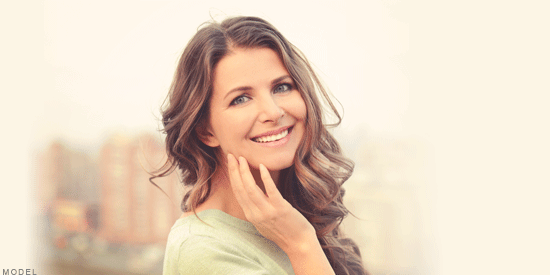Interestingly, the needle and syringe are now 2 of the most important tools we use in the delivery of cosmetic surgery and medicine. In a world filled with high-tech machinery, lasers, robots, and surgical instruments, these 2 low-tech, simple tools allow us to perform very effective and safe aesthetic improvements to the face and body, competing heavily with plastic surgery procedures. Nonsurgical cosmetic procedures are on the rise and are clearly outpacing surgical procedures year after year. So, what are the 7 ways a needle and syringe can be used to improve your look in 2023?
Neuromodulators
The field of neuromodulators has expanded to include BOTOX®, Dysport® , XEOMIN®, Jeuveau®, and Daxxify®. They are extremely popular and effective as they block nerve impulses to specific muscle groups in the face that crease the skin. These injectables can:
- Smooth frown lines
- Soften crow’s feet
- Erase bunny lines
- Subtly lift the brows
They can also be used for diminishing headaches or excessive sweating.
I prefer Dysport to all the rest due to the lower cost, quicker onset, and longer duration of results.
Fillers
There are multiple injectable fillers on the market. The most popular of these are the HA, or hyaluronic acid, fillers. Name brands include JUVÉDERM® and Restylane®, both of which have multiple formulations for different treatment areas and concerns. The two product families are very similar, but I prefer Restylane’s product line (Lyft, Silk, Kysse, Refyne, Defyne).
As we age, we all lose volume in specific areas of the face. The volume loss comes from a slow atrophy of fat, muscle, and bone that give us 3-dimensional structure. These dermal fillers, or soft tissue fillers, are designed to replace this deflation and re-suspend the support structures of the face, resulting in a more youthful appearance. The great thing about fillers is the result is immediate, yet also reversible.
Fat Transfer
Yes, your own fat can now be moved from one area of your body to another. Earlier fat transfer methods were inconsistent and unpredictable. Current techniques have dramatically improved the survival of the transferred fat. Patients in the past would either have a transient result, due to the loss of the fat that didn’t survive, or, because of this phenomenon, were overfilled in anticipation of some fat loss—and had inadvertent survival of too much fat, ending up looking like a Cabbage Patch doll. Fat processing and survival are now much better, and this technique is becoming much more popular for the face, natural breast augmentation using fat transfer, and the Brazilian butt lift, which involves extensive liposuction of the waist, hips, and legs, and fat transfer to the buttocks.
Sculptra®
Poly-L-lactic acid is the substance that makes up the bulk of dissolvable suture material used in surgery. Sculptra is a powder form of this substance, which is reconstituted in water and injected into areas for volume and collagen stimulation. It stimulates a healing response that causes your body to produce its own natural volume, which improves overall skin appearance and quality. We call it fertilizer for your face.
KYBELLA®
Deoxycholic acid is the active ingredient in KYBELLA. Lipodissolve was a similar substance that became popular between 2005 and 2008 as a body contour fat-melting injection procedure. Reformulated, and extensively studied and FDA-approved, KYBELLA injections in the submental chin and neck fat are a minimally invasive cosmetic procedure designed to reduce the fullness of the “selfie neck.”
Microneedling
This popular skin rejuvenation procedure involves a pen-like device with multiple small needles oscillating into the skin at adjustable depth settings. This minimally invasive procedure is extremely popular with patients looking for repair of sun damage and aging skin.
Subcision
Needles can be used to improve the appearance of surgical, traumatic, and acne scars. The needle is passed under the scar, effectively incising and releasing the scar. This blends the appearance of the skin and helps match the scar to its surroundings.
If you have questions about any of these injectable treatments, request a consultation or call us at (208) 676-8346 to schedule an appointment.




Leave a Reply